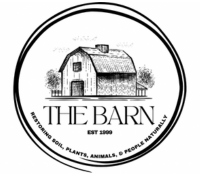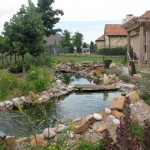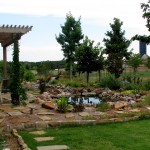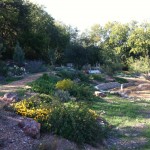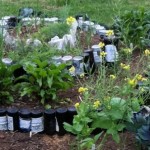James is certified permaculture designer and works at applying these concepts and principles in all of the work performed by The Barn.
What’s Permaculture and Why Learn it?
Permaculture draws from several other disciplines including organic farming, agroforestry, sustainable development, and applied ecology. “The primary agenda of the movement has been to assist people to become more self reliant through the design and development of productive and sustainable gardens and farms. The design principles which are the conceptual foundation of permaculture were derived from the science of systems ecology and study of pre-industrial examples of sustainable land use.”
Permaculture as a systematic method was developed by Australians Bill Mollison and David Holmgren during the 1970s. The word “permaculture” originally referred to “permanent agriculture”, but was expanded to also stand for “permanent culture” as it was seen that social aspects were integral to a truly sustainable system. Mollison has described permaculture as “a philosophy of working with, rather than against nature; of protracted and thoughtful observation rather than premature and thoughtless labor; and of looking at plants and animals in all their functions, rather than treating any area as a single project system.”
Core Values of Permaculture that we adhere to at The Barn:
What sets permaculture apart from other developmental approaches is that it is not just a model, it is a comprehensive design process. Each site, whether a household, school, clinic, business, farm, or village, has a unique set of elements and design considerations. But while each site is viewed as unique, permaculture design and practice is always based on three core values or ethics:
- Care of the Earth: Provision for all life systems to continue and multiply.
- Care of People: Provision for people to access those resources necessary for their existence.
- Setting Limits to Consumption: By governing our own needs, we can set resources aside to further the above principles.
Design Principles we Implement at The Barn:
Permaculture design emphasizes patterns of landscape, function, and species assemblies. It asks the question, “Where does this (element) go? How can it be placed for the maximum benefit of the system?” Permaculture draws on the practical application of ecological theory to analyze the characteristics of a farm, garden or home site. Each element of a design is carefully analyzed in terms of its needs, outputs, and properties. Design elements are then assembled in relation to one another so that the products of one element feed the needs of adjacent elements. Synergy (two or more things functioning together to produce a result not independently obtainable) between design elements is achieved while minimizing waste and the demand for human labor or the input of energy. Exemplary permaculture designs evolve over time, and can become extremely complex systems that produce a high density of food and materials with minimal input. The key to the permaculture design model is that useful connections are made between components in the final design. The focus is not on these elements themselves, but rather on the relationships created among them by the way they are placed together; the whole becoming greater than the sum of its parts. Permaculture is also about careful and contemplative observation of nature and natural systems, and of recognizing universal patterns and principles, then learning to apply these to one’s own circumstances.
Permaculture is therefore a form of Systems Theory, and (although generally in a primarily organic, and non-technological sense) is also related to the science of Cybernetics.
Permaculture is a form of polyculture agriculture. Polyculture is agriculture using multiple crops in the same space, in imitation of the diversity of natural ecosystems, and avoiding large stands of single crops, or monoculture. Perennial plants are often used in permaculture design. As they do not need to be planted every year they require less maintenance and fertilizers. They are especially important in the outer zones and in layered systems.
- Creating sustainable beauty takes more then knowledge but passion and creativity.
